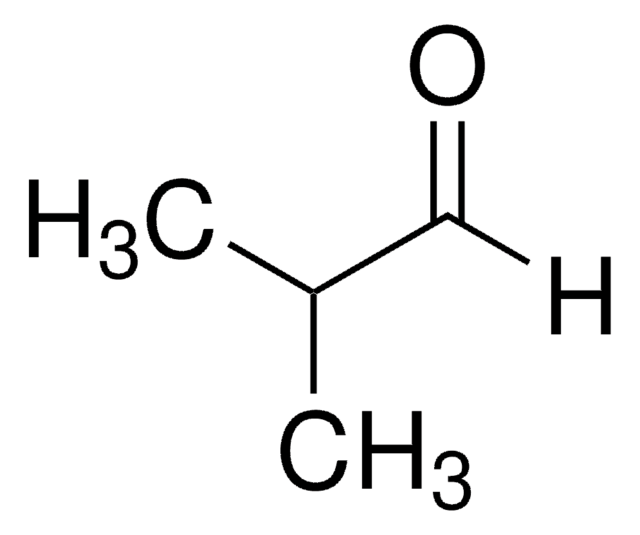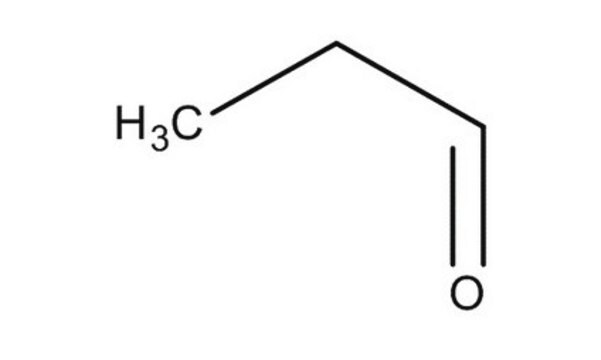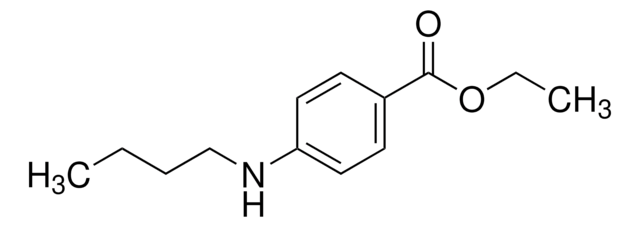About This Item
Recommended Products
biological source
synthetic
Quality Level
grade
Kosher
reg. compliance
FDA 21 CFR 117
vapor density
2.5 (vs air)
vapor pressure
90 mmHg ( 20 °C)
Assay
≥96.0%
autoignition temp.
390 °F
expl. lim.
12.5 %
refractive index
n20/D 1.380 (lit.)
bp
75 °C (lit.)
mp
−96 °C (lit.)
density
0.8 g/mL at 25 °C (lit.)
application(s)
flavors and fragrances
Documentation
see Safety & Documentation for available documents
food allergen
no known allergens
Organoleptic
cocoa; green; musty; pungent
storage temp.
2-8°C
SMILES string
[H]C(=O)CCC
InChI
1S/C4H8O/c1-2-3-4-5/h4H,2-3H2,1H3
InChI key
ZTQSAGDEMFDKMZ-UHFFFAOYSA-N
Looking for similar products? Visit Product Comparison Guide
Related Categories
Biochem/physiol Actions
Other Notes
Disclaimer
Signal Word
Danger
Hazard Statements
Precautionary Statements
Hazard Classifications
Eye Irrit. 2 - Flam. Liq. 2
Storage Class Code
3 - Flammable liquids
WGK
WGK 1
Flash Point(F)
<50.0 °F - Pensky-Martens closed cup
Flash Point(C)
< 10 °C - Pensky-Martens closed cup
Personal Protective Equipment
Regulatory Listings
Regulatory Listings are mainly provided for chemical products. Only limited information can be provided here for non-chemical products. No entry means none of the components are listed. It is the user’s obligation to ensure the safe and legal use of the product.
FSL
Group 4: Flammable liquids
Type 1 petroleums
Hazardous rank II
Water insoluble liquid
ISHL Indicated Name
Substances Subject to be Indicated Names
ISHL Notified Names
Substances Subject to be Notified Names
JAN Code
W221902-20KG-K:
W221902-8KG-K:
W221902-1KG:
W221902-SAMPLE-K:
W221902-250G:
W221902-4KG-K:
W221902-BULK:
W221902-SAMPLE:
W221902-20KG:
W221902-10KG-K:
W221902-BULK-K:
W221902-1KG-K:
W221902-4KG:
W221902-8KG:
W221902-VAR-K:
Choose from one of the most recent versions:
Already Own This Product?
Find documentation for the products that you have recently purchased in the Document Library.
Customers Also Viewed
Our team of scientists has experience in all areas of research including Life Science, Material Science, Chemical Synthesis, Chromatography, Analytical and many others.
Contact Technical Service













